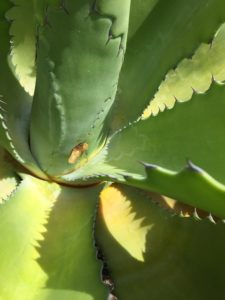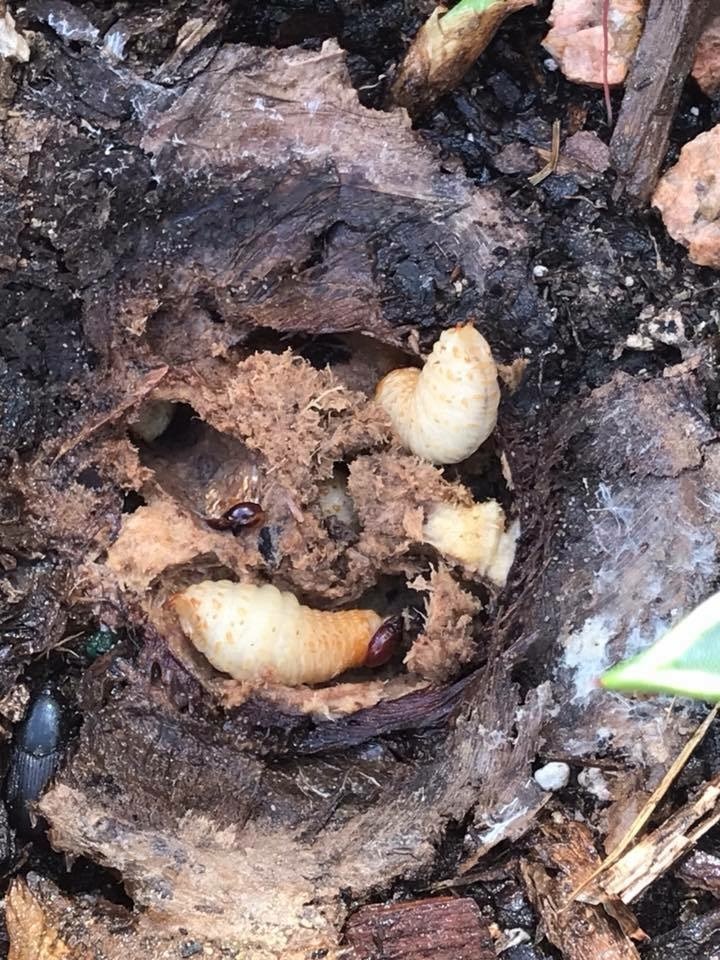The Agave Snout Weevils are at it again! The females have spent the past spring chewing into the Agaves and Yuccas and laying their eggs. They chew into the leaf bases, leaving behind a bacteria (Erwinia) as they go. That bacteria rots the heart of the plant. A small hole at the base of the leaf may indicate the entrance of the beetle. The eggs have now hatched into grub-like larvae, and have tunneled into the rotting heart of the plant.

Damage to a Yucca caused by Agave Snout Weevils
Unfortunately, by the time that you see the damage to your plant, it is usually severe. The bottom leaves will shrivel, and droop, although the top leaves appear fine. A putrid odor develops from the bacterial infection, and spreads throughout the plant as the larvae feed. It is actually the bacterial infection, not the burrowing larvae, which causes the demise of the plant.



Agaves approaching maturity, or those with a wide, blue-green leaf seem to be the most susceptible to damage by the snout nosed weevil.
Systemic insecticides with the active ingredient Imidacloprid have been effective in preventing and controlling the snout nosed weevils. Apply the product around the base of the plant in early April and again in late May to June. Systemic insecticides are absorbed by the plant’s roots and translocated to the above-ground parts. It may be effective against the adult weevil as it bores into the plant. It more probably will kill the larvae that begin to feed on the tissue. This prevents the spread of bacteria by the feeding larvae, which can eventually kill the plant.
If you do lose an Agave or Yucca to an Agave snout nosed weevil, remove all parts of the plant immediately and haul it away or destroy it. Treat the remaining agave and yuccas to prevent infestation. You may want to treat the ground around the dead plant as well-again, the best time to treat is when the adult weevil is active-once in early April and again in late May or June.



